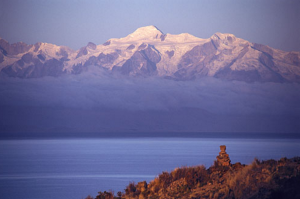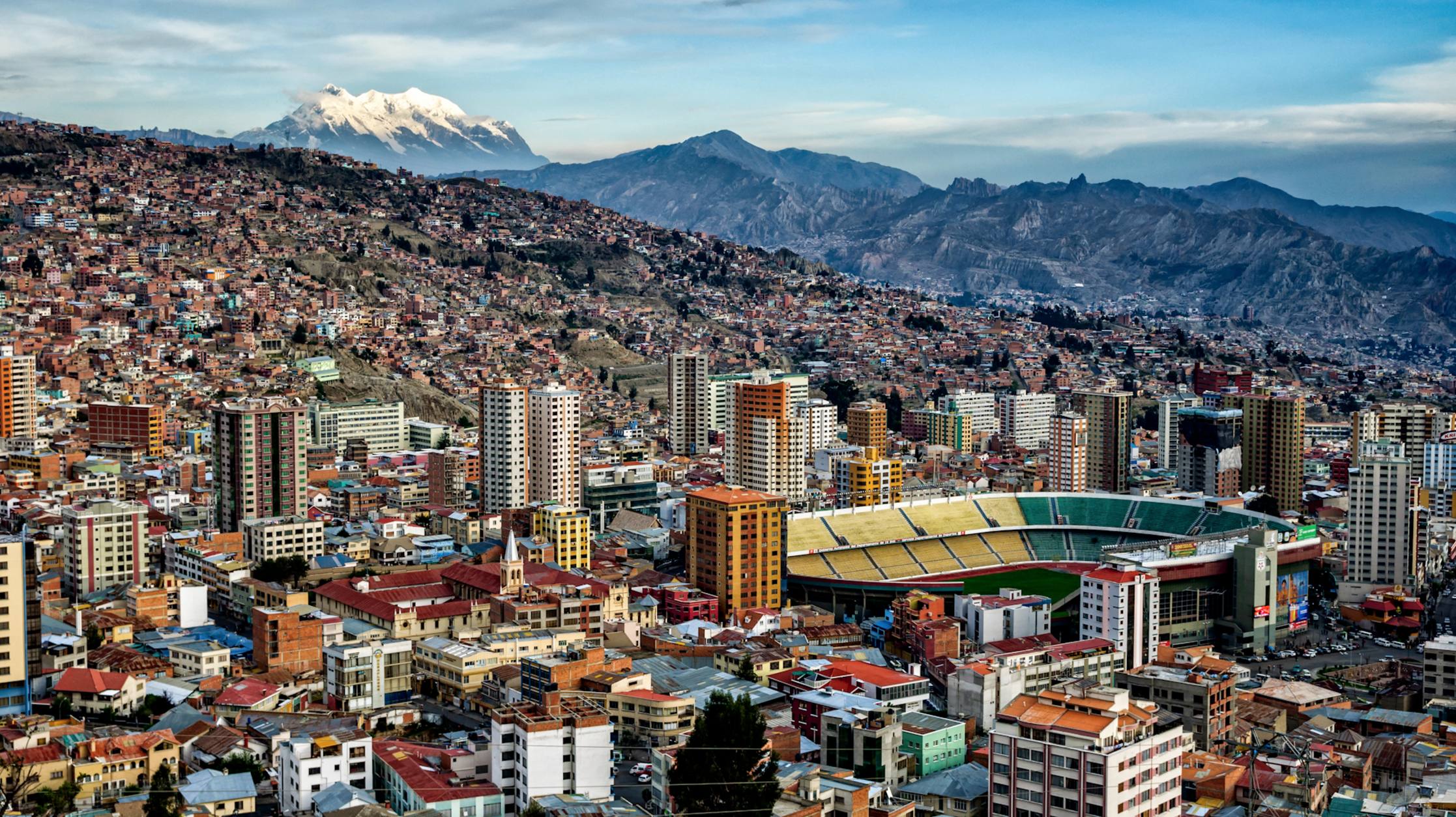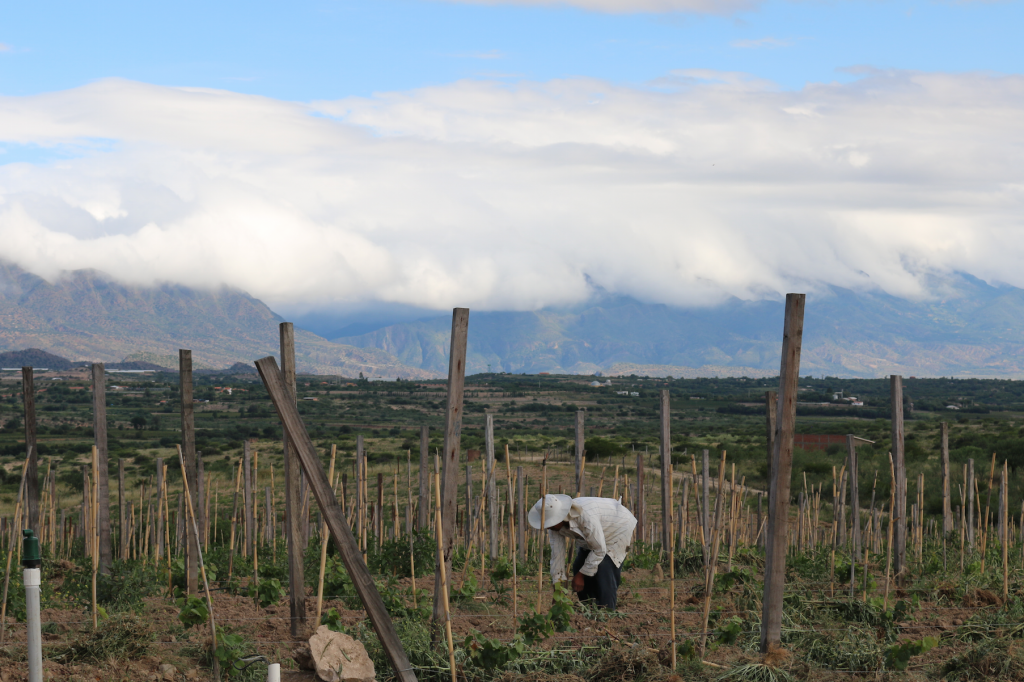The heart of Bolivian production is in Tarija – the country’s wine capital and home to 95% of the country’s wine production. There’s no mistaking the wine capital on arrival, as Tarija proudly promotes its wine production symbolised by a big glittering wine glass sculpture towering over the town.
The town of Tarija is nestled in-between the hillsides of the wine valley. Although the hills looks the same height as the city, Bolivia is the highest altitude wine region in the world. Vineyards can reach up to 3,000 meters above sea level, and are never less than 1,800m above sea level, giving Bolivia’s wines a very unique character.
The high altitude gives the grapes significant sun exposure and also a big diurnal temperature range from day to night, preserving racy acidity and some of the highest levels of resveratrol in wines (arguably making them healthier for your heart!) The reds are rich in colour, tannin and acidity, and the whites are highly aromatic with the same marked acidity typical of Bolivia.
What to drink
Muscat, Bodega Sausini
Muscat de Alejandria is the queen of grapes in Bolivia. It is usually used for singani production, however a handful of producers are using the high quality Muscat for still wine and this one from Sausini is a shining example. A flamboyant jasmine nose that gives way to an aromatic mouth with fresh acidity.
Cepas de Altura Syrah, La Concepcion
Syrah is one of the best adapted red varieties in Bolivia. This Syrah from La Concepcion has a very fruit-forward character filled with explosive notes of dark forest fruit and blueberries, in the mouth it is also filled with fruit and a peppery spine of tannin complimented by bright acidity.
Singani Los Parrales, Reserva Aniversario
Singani is the superstar spirit of Bolivia, coming from 100% Muscat de Alejandria at altitude. This is the top Singani from Kuhlmann winery and you’ll find a wonderfully aromatic nose with light fruit aromas and hints of chamomile and a characteristically smooth finish.
What to eat

Where to stay
To get a complete look over the valley, Los Parrales hotel is the best spot. A ten minute drive up above the town, you get great hilltop view over Tarija town and the surrounding hillsides which are the gateway to the wine region. This is also the top hotel resort in Tarija: the large bedrooms open out onto private balconies, and in the centre is a swim-around pool and gardens which are perfect for beating the Tarija heat in Summer time. The owner of the hotel is also part of the same family that make Kuhlmann sparkling wines, so you can order a chilled bottle of Bolivian bubbly to while away the afternoon with the best view in Tarija.
In La Paz, you can get some good R&R in Camino Suites located in the lowest part of the city, ideal as a base for exploring the city before moving onto the wine regions. With an action plan in place for helping you cope with the inevitable altitude acclimatization process, oxygen tanks are at the ready and an on-call doctor is included in your stay.
What to do

In La Paz, you have a true buffet of climbing options – from very challenging ice climbs through to rock climbing for beginners. The other great outdoors attraction near La Paz is of course Lake Titicaca, the largest lake in South America that on first glance appears like a sea because of its size. There are many islands to visit on the lake, but the most unusual of them all are the floating artificial islands made of reeds.
This is part of a series from our adventure Around the World in 80 Harvests. If you would like to learn more about wine regions around the world, you can take a look at the website here and follow the 80 Harvests journey!

